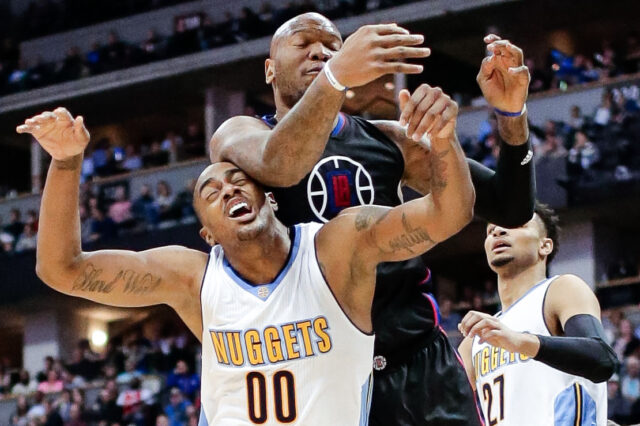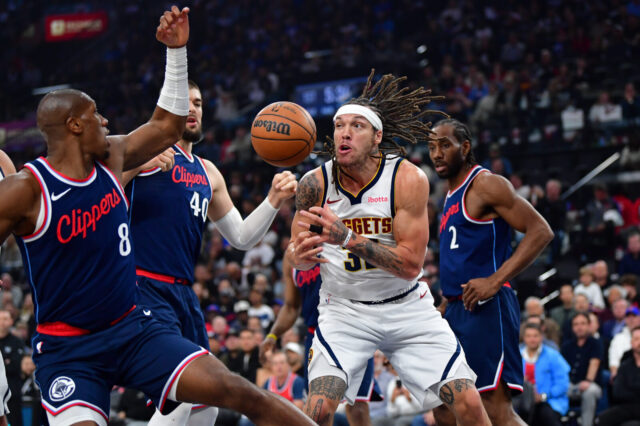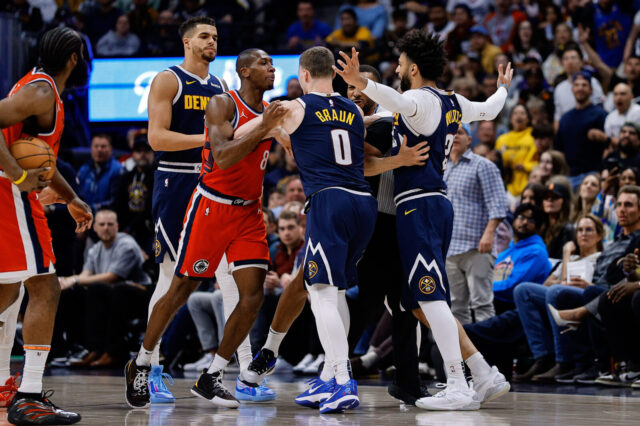The 2013 draft class, one of the weakest drafts in recent history, saw eight players get extensions on their rookie contracts.
Giannis Antetokounmpo, C.J. McCollum, Steven Adams, Rudy Gobert, Gorgui Dieng, Cody Zeller, Victor Oladipo, and Dennis Schroder all signed extensions that will pay them a ton of money over the next five years. That’s three of the first ten picks from that draft – sometimes, tanking for a top ten pick doesn’t work out as hoped.
The money on some of the contracts may be hard to comprehend – $102 million for Gobert is comparable to DeMarcus Cousins’ 4-year, $62 million extension in 2013 – but as the salary cap rises, the percentage of total salary cap given in extensions remains the same.
For the Nuggets, they don’t have to worry about extension negotiations until the end of the 2016-17 season. They left the 2013 draft with Erick Green and Joffrey Lauvergne, both of whom have since left the team for other organizations.
The Nuggets 2014 draft class has three players that figure to be rotation players for the foreseeable future – Jusuf Nurkic, Gary Harris, and Nikola Jokic. The Nuggets picked up the team option for 2017-18 on the contracts for Nurkic and Harris (smart!) and those players will be eligible for extensions that would kick in for the 2018-19 season.
Rookies are eligible to sign extensions for up to 25 percent of the salary cap, with special contract details available to “designated players” as per the guidelines established in the current CBA. None of the 2013 draft class signed for the maximum available dollar amount – a win for each of the teams involved.
What kind of contract could Nurkic and Harris be in line for? Here’s an example of a contract that was signed recently.
Dieng signed a 4-year, $64 million extension with the Minnesota Timberwolves, agreeing to just over 13 percent of the salary cap value for the 2017-18 season of $14,112,360 (contract details courtesy of Basketball Insiders). He will be earning a 7.5 percent raise each year, the maximum raise available under the current CBA.
I keep using the phrase “the current CBA.” That’s because the league and the player’s union are negotiating a new collective bargaining agreement to replace the current one, and if the two parties can reach an agreement before the end of the 2016-17 season, there won’t be another lockout. The details of the new CBA are unknown to the public, so from here on, every salary detail is assumed to be somewhat similar to the existing conditions.
Here’s my projection for the type of contract extensions that Nurkic and Harris could reach with the Nuggets:
| Player | 2017-18 | 2018-19 | 2019-20 | 2020-21 | 2021-22 | Years/Total |
|---|---|---|---|---|---|---|
| Jusuf Nurkic | $2,947,305 | $15,300,000 | $16,447,500 | $17,681,063 | $19,007,142 | 4/$68,435,705 |
| Gary Harris | $2,550,055 | $12,240,000 | $13,158,000 | $14,144,850 | $15,205,714 | 4/$54,748,564 |
I reached those values by giving Nurkic a contract that was worth 15 percent and Harris a contract that was worth 12 percent of the salary cap ($102,000,000 in 2017-18).
Those are, in my opinion, conservative estimates. There is a lot of unknowns surrounding the new CBA, and I can’t say with certainty what the details will be regarding extensions. The league may find new revenue options that would increase the salary cap – legalized gambling, advertisements on jerseys, international viewers – that would drive up the salary cap in future years. That would have more of an impact on players like Emmanuel Mudiay, Nikola Jokic, Jamal Murray, Juancho Hernangomez, Malik Beasley, and whichever players the Nuggets draft in the coming years.
What the Nuggets end up doing with Harris will be interesting, at least for people that pay attention to the salary cap for teams. If the team feels confident that Murray and Beasley can replace his contributions, they may be comfortable waiting for Harris to play out the season and decide whether to offer him a contract in the offseason. I don’t think they’ll be inclined to do the same with Nurkic.
If the Nuggets want to keep their young core – Jokic, Mudiay, Nurkic, Murray, Beasley, Hernangomez – together into the next decade, it’s going to be very expensive. The last year that the team will get to enjoy having rotation players on rookie-scale contracts is next season – the extensions for Nurkic and Harris kick in for the 2018-19 season. The Nuggets could, hypothetically, be looking at committing over 90 percent of their salary cap for the 2020-21 season to that group of seven players.
This is the problem that teams with a lot of young talent are going to experience in the coming years. Take the Utah Jazz for example – extending Gobert is something they had to do, but he won’t cost them just $104 million over the next five years. The extension for Gobert also means that one of Gordon Hayward or George Hill might not be with the Utah Jazz next season.
Some of the more erudite readers may have noticed I left Jokic out in the extensions discussion for the 2013 Nuggets draft class. It’s an easy explanation – Jokic didn’t sign his contract until a year later, spending a season stashed overseas.
The contract Jokic did sign is probably the best value in the league (outside of the contracts given to the top-5 players in the league). Jokic has the second-lowest salary on the team this season, ahead of only Jarnell Stokes. He has a team option in 2018-19, and after that season his extension will be able to kick in. He looks like he’ll be able to command a max offer from the Nuggets.
I mean, this is a 21-year-old, imagine what he’ll be doing in four years? Good times.


